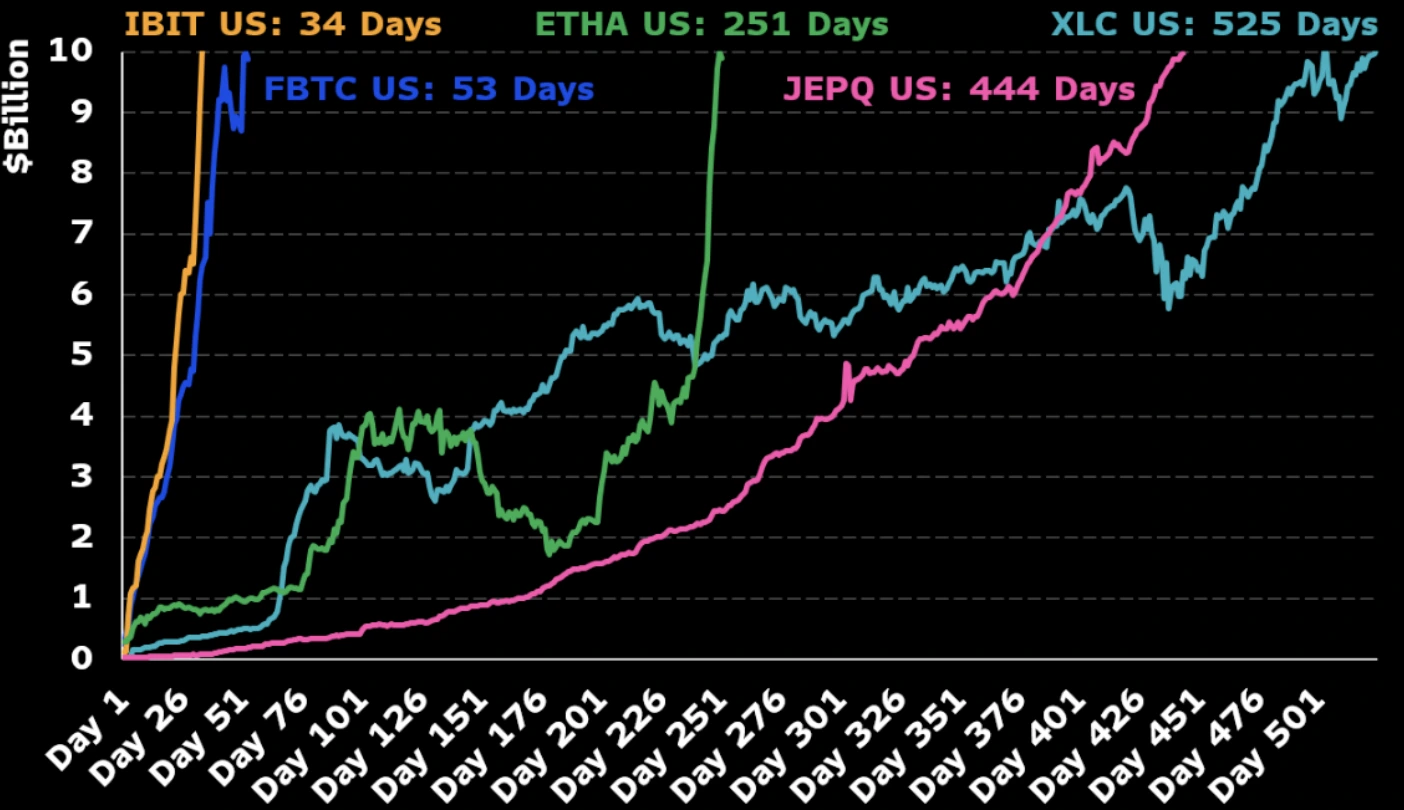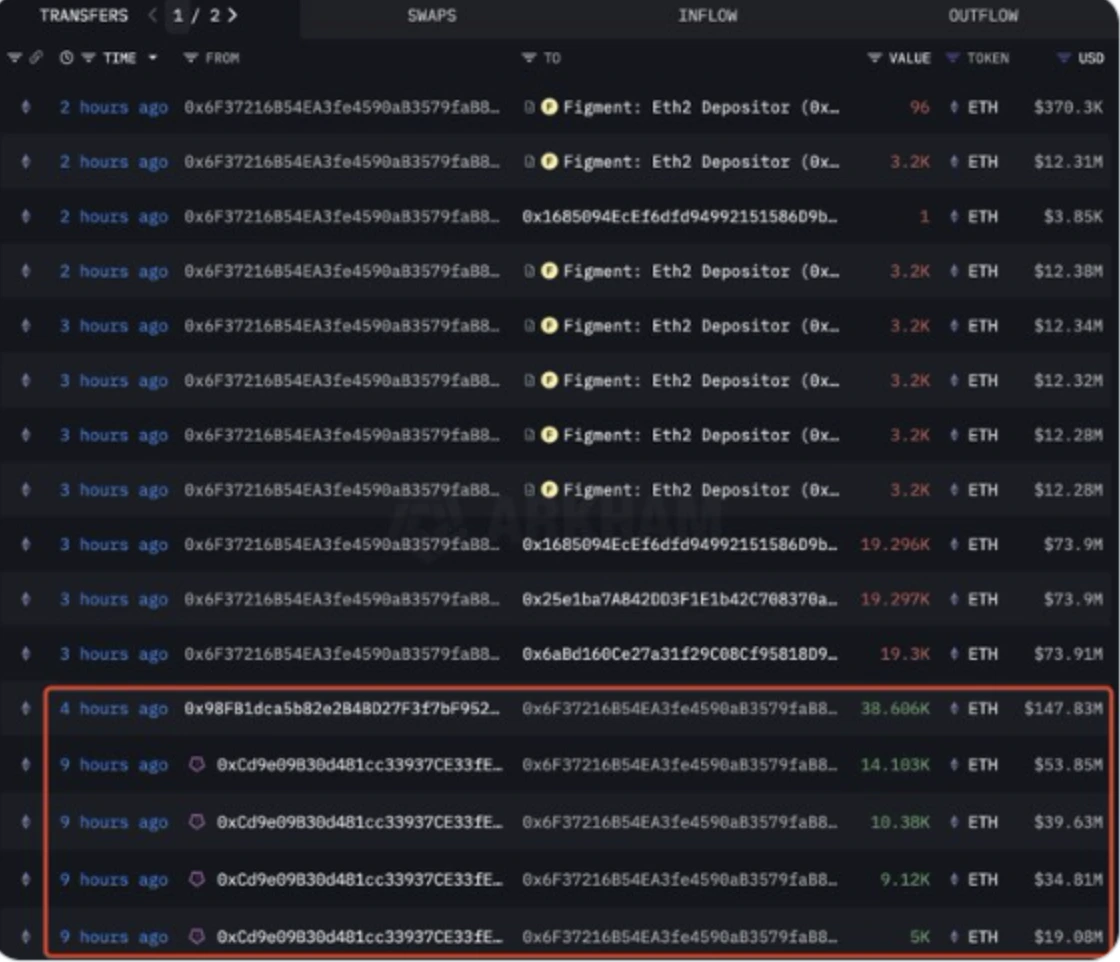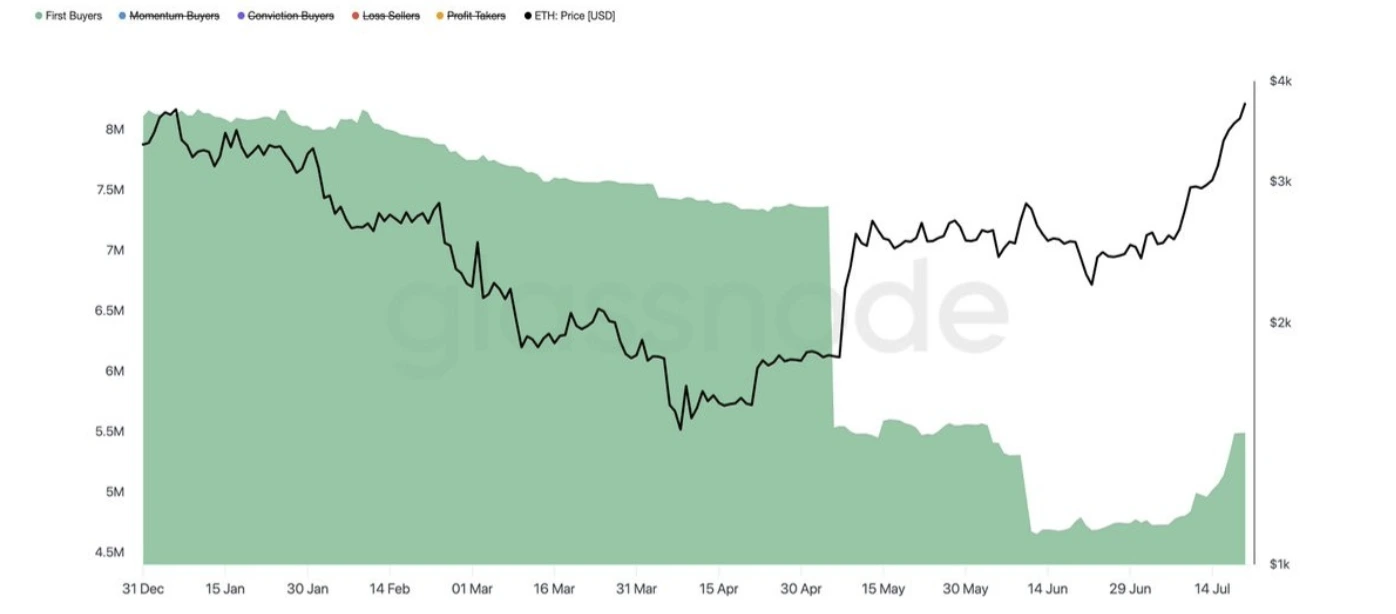Ethereum ETFs signal a new wave of institutional interest
Ethereum ETFs signal a new wave of institutional interest
Ethereum ETFs signal a new wave of institutional interest

In the world of cryptocurrency, spectacular price rallies often grab headlines, but sometimes the most significant developments happen beneath the surface. Ethereum has been steadily attracting institutional attention, with ETF inflows surpassing the $10 billion milestone – a development that could potentially reshape ETH's market trajectory in the coming months.
The institutional flywheel gains momentum with Ethereum’s ETF inflows
The mechanics behind Ethereum's growing institutional appeal are straightforward but powerful. As capital flows into Ethereum ETFs like $ETHA, fund managers must purchase the underlying asset, creating sustained demand pressure. This increasing demand gradually pushes prices upward, attracting more attention and potentially triggering additional investment – creating what analysts describe as a self-reinforcing "flywheel effect."
What's particularly noteworthy is the pace of this institutional adoption. $ETHA reached the $10 billion assets under management threshold in just 251 trading days, making it the third-fastest ETF in history to achieve this milestone. Only Bitcoin's $IBIT and $FBTC reached this mark more quickly. Even more impressive, $ETHA's assets under management have doubled within the past ten days alone, suggesting institutional appetite for Ethereum exposure remains robust.

A broader institutional embrace and the ETH price prediction
The institutional interest extends well beyond ETF vehicles. We're now witnessing public companies building significant Ethereum treasury positions, mirroring the corporate Bitcoin adoption trend that emerged in 2021. Organisations such as BitMine Immersion and SharpLink Gaming have each accumulated over £1 billion in ETH holdings, signalling growing confidence in Ethereum as a long-term store of value.

On-chain metrics further support this narrative of accumulation. According to Glassnode data, first-time ETH holders have increased by 16% since early July, while exchange balances have declined to their lowest levels since 2016. With over 28% of all ETH now locked in staking contracts, the available supply continues to tighten precisely as institutional demand accelerates.

The Ethereum price trend puzzle
Despite these impressive inflows, Ethereum currently trades approximately 22% below its all-time high, hovering around $3,800. This apparent disconnect between strong institutional buying and modest price action has left many market participants puzzled.
Several factors likely explain this dynamic. Institutional capital typically operates with longer time horizons and more measured accumulation strategies compared to retail investors. Additionally, some of this ETF-driven demand may be replacing existing ETH positions rather than introducing entirely new capital to the ecosystem.
The regulatory environment has also evolved significantly since the SEC approved Ethereum ETFs in 2024. This maturing regulatory framework has brought greater stability to the market but may also temper the euphoric price movements characteristic of previous crypto bull cycles.
A measured bull market with room to grow for the ETH price
Despite the restrained price action, underlying metrics suggest Ethereum's position remains remarkably strong. Approximately 94.4% of ETH's circulating supply is currently in profit according to Glassnode data. Yet market sentiment indicators remain surprisingly moderate, with the NUPL (Net Unrealized Profit/Loss) score sitting in the "optimism" range rather than showing the extreme enthusiasm typically associated with market tops.
Even as open interest in Ethereum futures has surged beyond $56 billion, funding rates remain relatively balanced, indicating traders aren't excessively leveraged. This combination of strong fundamentals and moderate sentiment suggests Ethereum may have considerable upside potential before reaching overheated territory.
Ethereum's expanding utility landscape
Beyond financial metrics, Ethereum's fundamental value proposition continues to evolve. The network recently increased gas limits, and blocks filled immediately, demonstrating robust demand for block space. While NFTs initially drove much of Ethereum's usage, the network now hosts a diverse ecosystem of applications including stablecoin transactions, rollup proofs, and modular DeFi protocols.
The recent GENIUS Act legislation may further enhance Ethereum's position by facilitating increased stablecoin issuance from traditional financial institutions. As Ethereum increasingly serves as the foundation for Web3 financial infrastructure, its long-term value proposition becomes more compelling to institutional investors.
Technical outlook remains constructive for Ethereum’s price forecast
From a technical perspective, Ethereum currently appears to be in price discovery mode with momentum favouring a move toward the $4,000 level. Should a reversal occur, traders should watch for initial support around $3,590. In the event of a more significant correction, additional support levels exist at $2,470 and $1,800.
While the path forward may not resemble the explosive rallies of previous cycles, the foundation for sustainable growth appears increasingly solid. With supy continuing to tighten, institutional inflows accelerating, and on-chain activity maturing, Ethereum possesses the fundamental ingredients for a significant breakout – whether that materialises in the near term or further into the future.
This institutional-driven accumulation phase represents a more measured, sophisticated market dynamic than previous crypto bull runs. And if the institutional flywheel continues gaining momentum, Ethereum could potentially lead the next major market cycle – built on a foundation of steady ETF inflows rather than speculative mania.
Speculate on ETH's next movements with a Deriv MT5 account.
The performance figures quoted are not a guarantee of future performance. This content is not intended for EU residents.















